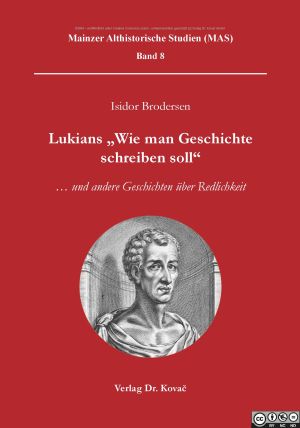
How to Cite
License

This work is licensed under a Creative Commons Attribution-NonCommercial-NoDerivatives 4.0 International License.
Published
Lukians „Wie man Geschichte schreiben soll“
… und andere Geschichten über Redlichkeit
Lucian of Samosata (2nd century AD) is best known for his humorous and satirical works. However, he also produced the only surviving treatise from antiquity dealing extensively and explicitly with historiography and its rules. Accordingly, this work is regarded as an important source for the study of ancient historiography.
However, especially with Lucian as the author, it is far from certain that the primary aim of the treatise is, in fact, to educate its readers in the art of historiography. This study aims at tackling this question by reading “How to write history†not within the historiographical discourse, but rather as part of Lucian’s literary game. As an author of the Second Sophistic, Lucian succeeds in amusing his audience under the guise of historiographical teaching.
In connection with two other works by Lucian, a picture emerges of an author who is not only proficient in the classical canon. Rather, by staging the classics and parading his contemporaries, he is able to combine his criticisms with humour. Historiography in “How to write historyâ€, elegant narration in the “True historiesâ€, and as the gullibility of his contemporaries in “Alexander†all serve Lucian’s aim of distancing himself and his readers from would-be educated people and impostors. Thus, the literary game can be seen as a tool for self-confidence and distinction within the Second Sophistic.






